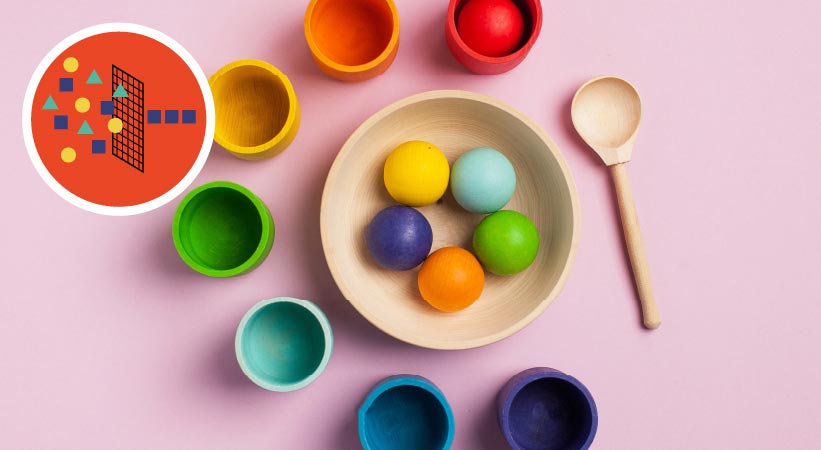
Read Sorting at the Market by Tracey Steffora or another book about sorting. After reading, discuss what it means to sort and why it is helpful to sort objects into groups. Invite children to sort objects available in class and label the groups they create. Discuss how sorting involves abstraction, which focuses on some details and ignores others. As they sort, invite children to practice counting and comparing quantities.
Explain and define abstraction.
To introduce sorting, ask children what they think it means to sort objects into groups. Discuss what it means to sort; elaborate on terms children may not be familiar with and provide examples as needed.
Read Sorting at the Market by Tracey Steffora or another book about sorting. During or after you read, ask children to describe what they notice about how the objects are sorted, pointing out the characteristics as needed.
Engage children in a sorting activity and show the objects to sort and baskets to place the group of sorted objects. Invite children to share the ways they can sort the objects (e.g., by color, by size, by type of object), scaffolding as needed.
Have children take turns sorting the objects into the appropriate basket until all objects are sorted. After sorting is complete, review the groups and invite children to count the objects in each group and compare quantities of the groups:
To introduce labeling (which relies on abstraction), ask children how they will remember/know the sorted objects in each group. Share how labels can help because they show only the important details making it easier to identify the objects in each group.
Prompt children on how to label each group, scaffolding as needed.
Create the labels with children (using words and/or drawings) and review them together.